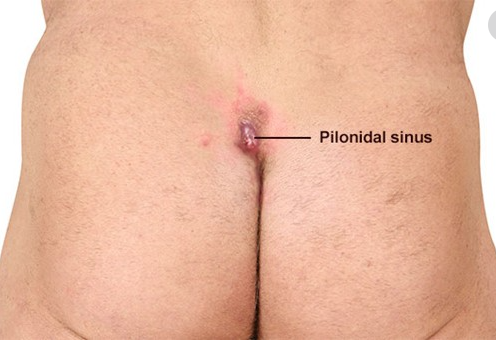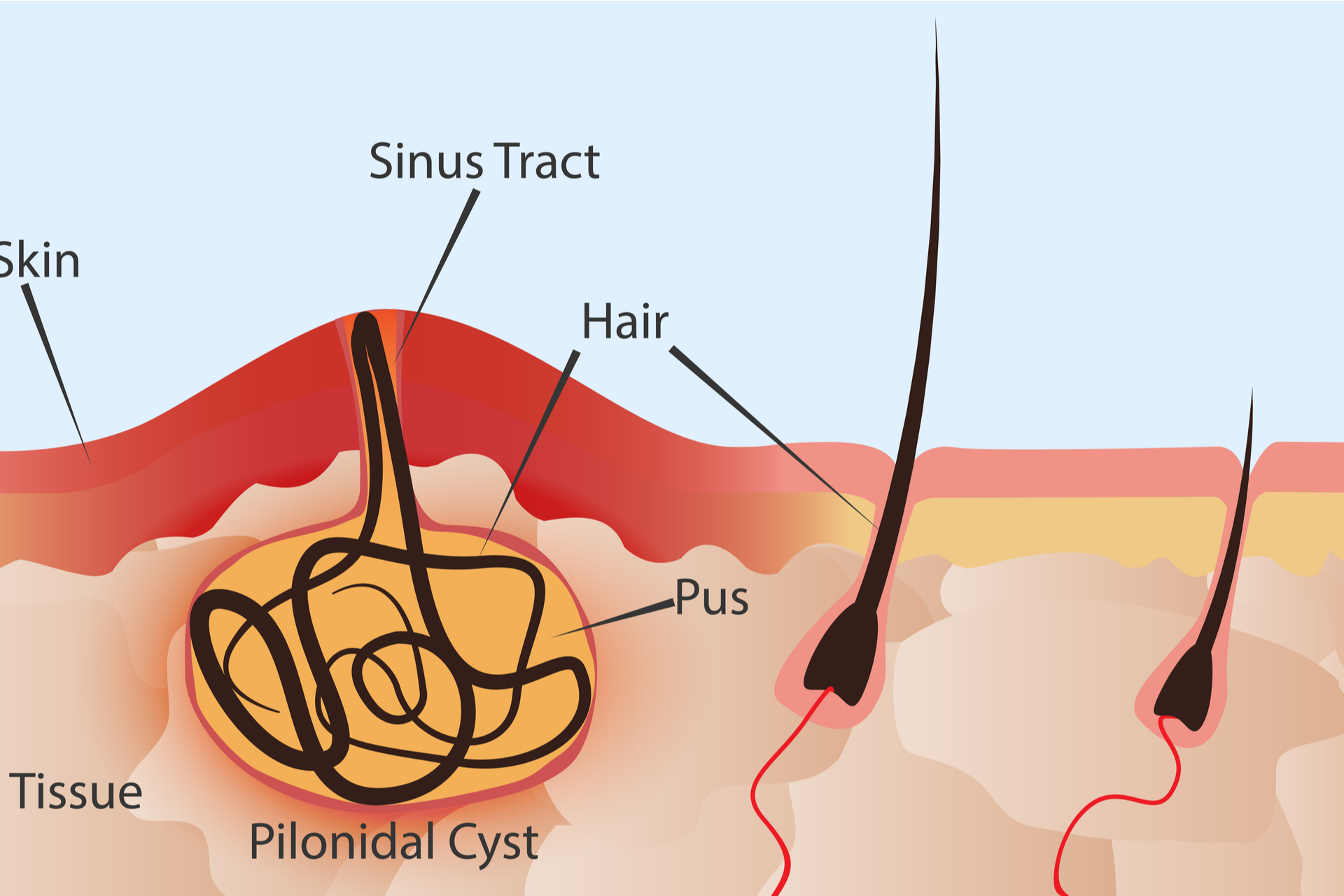A pilonidal cyst is an abnormal pocket in the skin filled with hair and skin debris that is almost always found around the tailbone at the top of the cleft of the buttocks. These cysts can be extremely painful, especially while sitting. They can also become infected, which can cause fever, chills, nausea, and fatigue. Although many men are reluctant to seek treatment for pilonidal cysts, treatment is recommended to prevent recurrence.
Did You Know?
Pilonidal cysts are quite common and are more likely to affect men between the ages of 20-40. Being overweight, having thick body hair, sitting for long periods of time, and wearing tight clothing can all increase the risk of developing a pilonidal cyst.
Frequently Asked Questions:
Do I have a pilonidal cyst?
You may have a pilonidal cyst if you notice a small pocket of skin around your tailbone that is painful, red, and tender. Pilonidal cysts may also drain blood or pus and can be accompanied by a foul smell from the drainage. They can be different sizes and range from a small dimple to a larger area. To determine if you have a pilonidal cyst, schedule a consultation with Dr. Bortecen of SoHo Men’s Health today.

How are pilonidal cysts treated at SoHo Men’s Health?
SoHo Men’s Health offers several treatment methods, depending on the severity of the cyst. In mild cases, antibiotics may be able to be effectively used. For more advanced cases, however, the cyst may require drainage with an incision or small needle. In cases where the cyst is recurring, surgery may be recommended to remove it entirely.
Can pilonidal cysts be prevented?
The risk of developing a pilonidal cyst can be reduced by maintaining good hygiene of the buttocks, keeping the area dry, losing weight to minimize pressure on the tailbone, avoiding sitting for long periods of time, shaving or laser hair removal of the buttocks to avoid ingrown hairs, and avoiding tight underwear or clothing.

